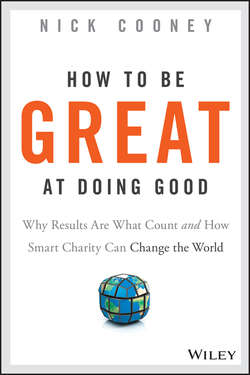Читать книгу How To Be Great At Doing Good - Cooney Nick - Страница 9
На сайте Литреса книга снята с продажи.
2
Doing Good or Doing Great?
ОглавлениеA Tale of Two Charities
In 1953, a former U.S. Naval Reserve officer and newspaper editor named W. McNeil Lowery took a job at the Ford Foundation. Launched by Ford Motor Company founders Edsel and Henry Ford, the Foundation's noteworthy achievements have included providing initial funding for the creation of the Public Broadcasting System (PBS), helping launch the microloan movement of providing small loans to the global poor, helping launch civil rights groups like the Mexican American Legal Education and Defense Fund and the National Council of La Raza, and playing a major role in funding research to fight the AIDS epidemic.
But Lowery, whose personal background included contributing to and editing literary and theater journals, is credited with helping steer a portion of Ford Foundation funding toward a new area: the arts. After providing initial modest funding to orchestras and operas in the late 1950s, the Foundation distributed $6 million in grants to repertory theatres in 1962 and nearly $8 million in grants to major ballet organizations in 1963, with major gifts to support the performing arts continuing in the following years. By the time Lowery passed away in 1993, the Ford Foundation had become the largest non-governmental supporter of the arts in the United States. So crucial was Lowery's role in this shift that Lincoln Kirstein, co-founder of the New York City Ballet, called Lowery “the single most influential patron of the performing arts that the American democratic system has produced” (Anderson, 1993).
At the same time as Lowery began to direct millions of dollars toward theater, dance, and other performing arts organizations in the late 1950s and early 1960s, he became concerned about what he saw as a lack of cooperation and communication among such organizations. So in 1961 the Ford Foundation made a commitment to spend a quarter of a million dollars over the next four years helping to establish and launch a new non-profit called the Theatre Communications Group (TCG). The goal of TCG would be to improve communication between theaters and theater workers around the country so that they could learn from one another and bring the entire field of non-profit theater to greater levels of professionalism and success.
Fifty years later, the Theatre Communications Group still carries on that mission. Today TCG's operating budget hovers near the $10 million mark, and it has expanded its work into a range of areas: hosting national conferences and conducting research studies, providing $2 million in grants each year to individuals and theaters, publishing the works of hundreds of playwrights and other theater professionals, producing magazines and bulletins that serve as essential reading for those who work in or want to work in the theater industry, and advocating on Capitol Hill for increased federal funding of the theater arts.
Конец ознакомительного фрагмента. Купить книгу
